Day 68:
Wick - John O'Groats - Georgemas
Castles, capes, mists and a near-complete circle
This morning we got off to a slow start, like good sourdough starters. And while I was watching the seagulls from the window, Papa Edu started chatting with our new neighbor, a Swiss woman who lives permanently in a Dacia Duster. Yes, you heard that right: her, her dog (a big one!), and all her things... living in a car smaller than my basket. I thought it was heroic. Although also a bit cramped for a nap.
Around noon, we went out. First stop: Lidl, for the basics of life (and no, we didn't buy pet food, thankfully). Then we continued towards Noss Head, where there's a car park next to a coastal path that leads to Sinclair Girnigoe Castle. The name sounds like a wifi password, but in reality, it's an imposing ruin hanging from the cliff. They say it's one of the most spectacular castles in Scotland, because it combines history and breathtaking views. In its heyday, it was a stronghold of the Sinclairs, with towers, halls, and family dramas of the good old days. Today, just enough remains to let your imagination run wild, with the sea as a backdrop and the wind ruffling your thoughts.
Then we continued north, and as it was time for lunch, we stopped at a coastal car park next to the Nybster Broch. This place is a gem. At the top of the cliff is the broch, which is a kind of circular prehistoric tower built with stones without cement or anything. It is believed that they were built more than two thousand years ago, and no one knows exactly what for: defense? housing? secret Celtic club? And scattered around the field are small monuments, the work of John Nicolson, from the 19th century. They are carved sculptures that resemble a small rustic temple in the middle of the field. Very curious and very "Scotland with an ancient echo".
With a full belly, we continued along the coast and arrived at John o' Groats, one of those places that sounds like the end of the world, and it kind of is. But we didn't stop there, but went directly to Duncansby Head, the true northeasternmost point of the island of Great Britain. There is a white lighthouse, pastures full of suspiciously calm sheep, and a path along the cliffs that leads to the Duncansby Stacks, rock needles that look like giant teeth coming out of the sea. They impress even when, as today, a fog crept along the coast and enveloped everything in an air of mysterious fairytale. It seemed we were going to see a dragon appear or, at the very least, a ghost bagpiper.
And the most impressive thing of all: the cliffs were teeming with birds. I'm not talking about four bored seagulls. No, no. I'm talking about thousands of birds squawking, flying, perching on the ledges as if it were the noisiest apartment building in the Animal Kingdom. The most spectacular were the common guillemots (in Spanish *araos comunes*, a wise name: Uria aalge), creatures that look like miniature penguins, with black bodies, white bellies, and a long, sharp beak. They walk upright, as if they had just come out of an important meeting, and they launch themselves into the sea from the cliffs without even looking. They are expert seabirds at diving, and they can reach up to 50 meters deep. Their thing isn't flying beautifully, but diving like champions. And when they're in a group, they're a real party.
Around eight o'clock, we went back to John o' Groats, which is more a collection of houses and tourist shops than a town. There is the famous post with distances to places like New York or Land's End. There is also a water point, where Papa Edu tried to fill the tank, but the stream was so slow that we almost lost our patience into the jerry can.
And then came the difficult part: finding a place to sleep. In John o' Groats everything is forbidden. Okay, they didn't say it with shouts, but the signs made it clear that we were not welcome there. We decided to go towards Dunnet Head, a natural area theoretically open to overnight stays, but all the roads were blocked with stones, chains, tractor wheels, and hostile signs. On top of that, Park4Night talks about very angry neighbors who throw eggs, block exits and give looks that lower the camper's suspension.
So, we took off from there like we had stolen a sheep, and we went south, returning to civilization. Finally, and already at night, we ended up in a large car park, with picnic tables and the company of other campers. The place is very nice, although... we realized that we have almost done a complete circle, and we are only 25 minutes from Wick, where we slept yesterday.
But hey, the important thing is that we have survived the camper-hostile labyrinth of northeastern Scotland, we have seen castles, stones, epic mists, penguin-looking birds, and rock formations that could star in their own Netflix series.
Now, it's time to have dinner, stretch our legs and sleep. Tomorrow will be another day... hopefully, without tractors blocking anything.



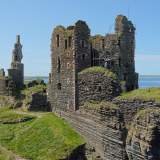


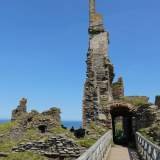


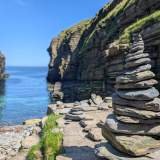














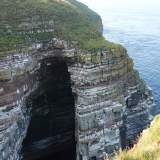




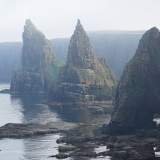

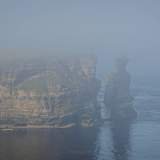











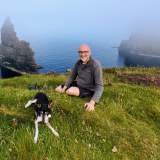

Añadir nuevo comentario